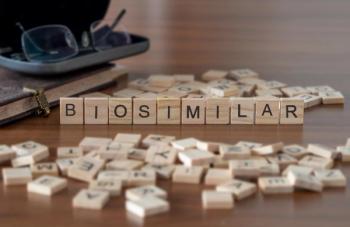
Blinatumomab Versus Chemotherapy in Relapsed B-Acute Lymphoblastic Leukemia
Immunotherapy drug blinatumomab showed benefit in pediatric patients with relapsed acute lymphoblastic leukemia who have minimal residual disease following chemotherapy.
Immunotherapy agent blinatumomab showed superiority over chemotherapy in significantly improving survival in young patients with relapsed B-acute lymphoblastic leukemia (ALL), according to late-breaking study results presented at the American Society of Hematology Annual Meeting and Exposition.
Cure rates for children, adolescents, and young adults with ALL have improved dramatically over the years, but relapse still occurs in 15% of patients, according to study author Patrick A. Brown, MD, who presented the findings at the meeting. Moreover, survival is poor following relapse. Currently, standard treatment approaches for high-risk relapses includes intensive chemotherapy and hematopoietic stem cell transplant (HSCT).
Blinatumomab, an immunotherapy drug, is currently approved for use in the relapsed/refractory setting for pediatric patients with ALL. However, this is the first trial to confirm its benefits in pediatric patients who have minimal residual disease (MRD) following chemotherapy after relapse.
The study (AALL1331) included 208 patients ages 1 to 30 years old who received 1 month of induction chemotherapy. Patients with early relapse or late relapse with high levels of MRD were randomized to receive either chemotherapy (Arm A) or blinatumomab (Arm B), followed by transplant.
The primary endpoint was disease-free survival (DFS) from the time of randomization. Overall, blinatumomab was associated with an approximately 20% increase in DFS compared with chemotherapy, with an average follow-up of approximately 1.5 years. Among patients with detectable MRD after the first month of chemotherapy, 79% of those receiving blinatumomab achieved undetectable MRD compared with just 21% among those receiving chemotherapy alone. Overall survival, the study’s secondary endpoint, was also approximately 20% greater in patients treated with blinatumomab compared with chemotherapy, according to the data.
In the briefing, Dr Brown indicated that the improved survival with blinatumomab was likely related to 3 major factors: better MRD clearance, less toxicity, and greater ability to successful bridge to HSCT.
“Given the fact that transplant is the treatment most likely to cure patients with relapsed ALL, this third factor is particularly important,” Brown said.
The rate of patients successfully proceeding from randomization to HSCT was drastically different between the 2 arms, with only 45% of patients in Arm A proceeding to HSCT compared with 73% of patients in Arm B, according to the results.
Based on these findings, Brown concluded that blinatumomab showed superiority to standard chemotherapy as post-reinduction consolidation prior to HSCT. “Thus, blinatumomab constitutes a new standard of care in this setting,” he said. The study will continue to track enrolled patients to assess longer-term outcomes.
Furthermore, Brown noted that future research will continue to build on these results by optimizing immunotherapy in relapsed ALL, with strategies such as combining blinatumomab with checkpoint inhibitors, attempting to use immunotherapy to replace or augment reinduction chemotherapy, and studying the ability of chimeric antigen receptor T-cells to replace or augment HSCT.
The study was led by the Children’s Oncology Group, part of the National Cancer Institute-sponsored Clinical Trials Network.
Reference
- Brown PA, Lingyun J, Xu Xinxin. A randomized phase 3 trial of blinatumomab vs chemotherapy as post-reinduction therapy in high and intermediate risk (HR/IR) first relapse of B-acute lymphoblastic leukemia (B-ALL) in children and adolescents/young adults (AYAs) demonstrates superior efficacy and tolerability of blinatumomab: A report from Children’s Oncology Group Study AALL1331 [LBA-1]. Presented at: American Society of Hematology Annual Meeting and Exposition. December 10, 2019. Orlando, Florida.
Newsletter
Stay informed on drug updates, treatment guidelines, and pharmacy practice trends—subscribe to Pharmacy Times for weekly clinical insights.




